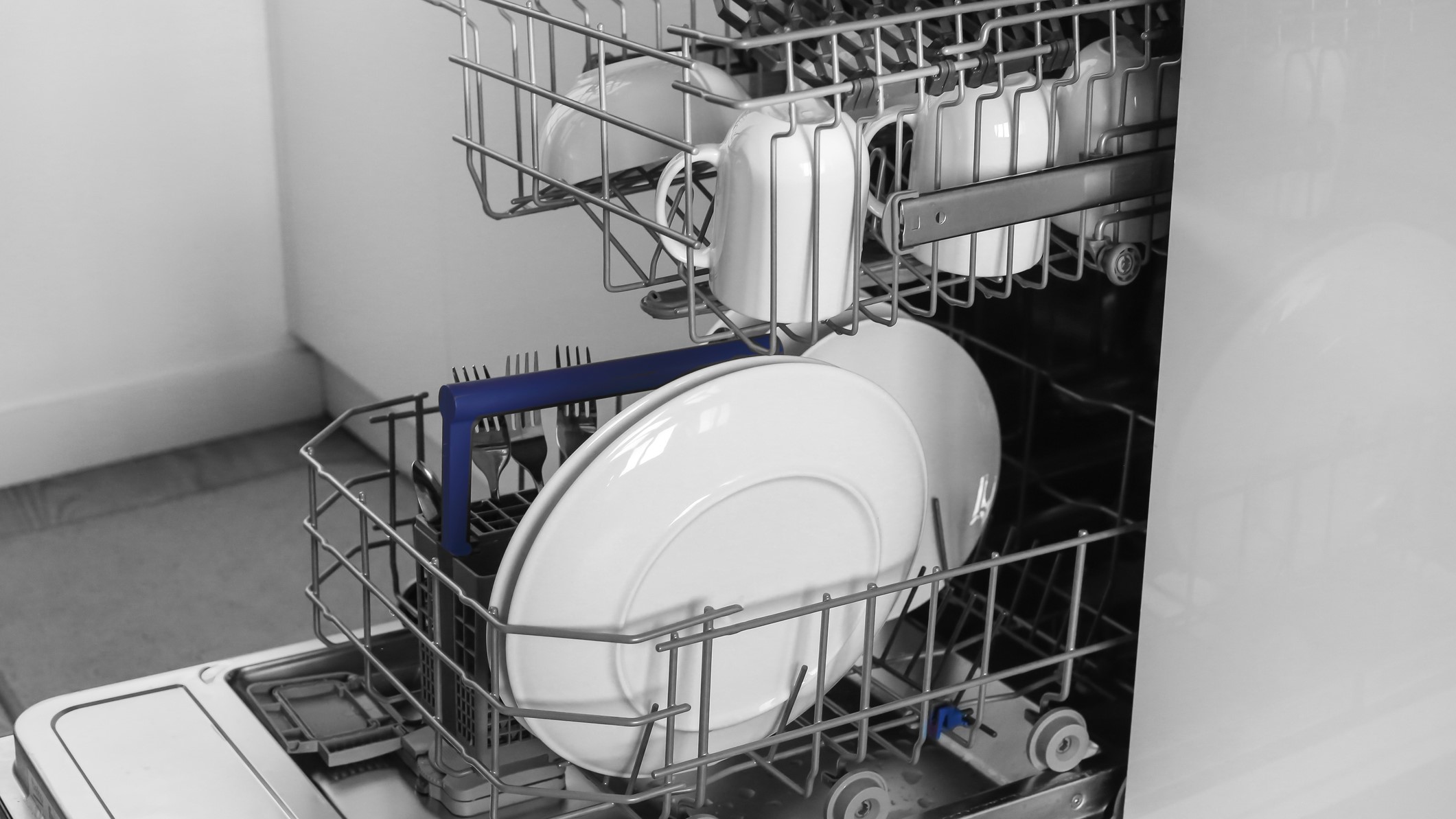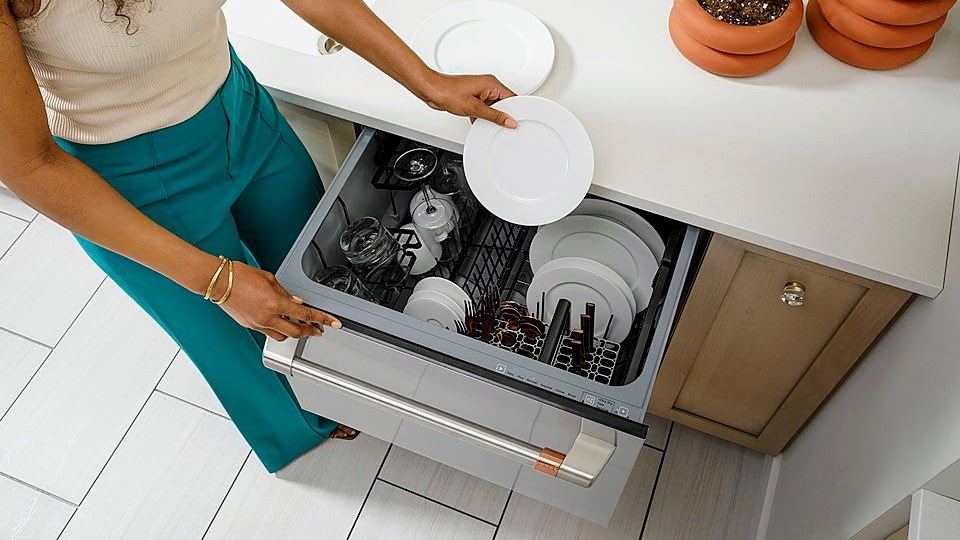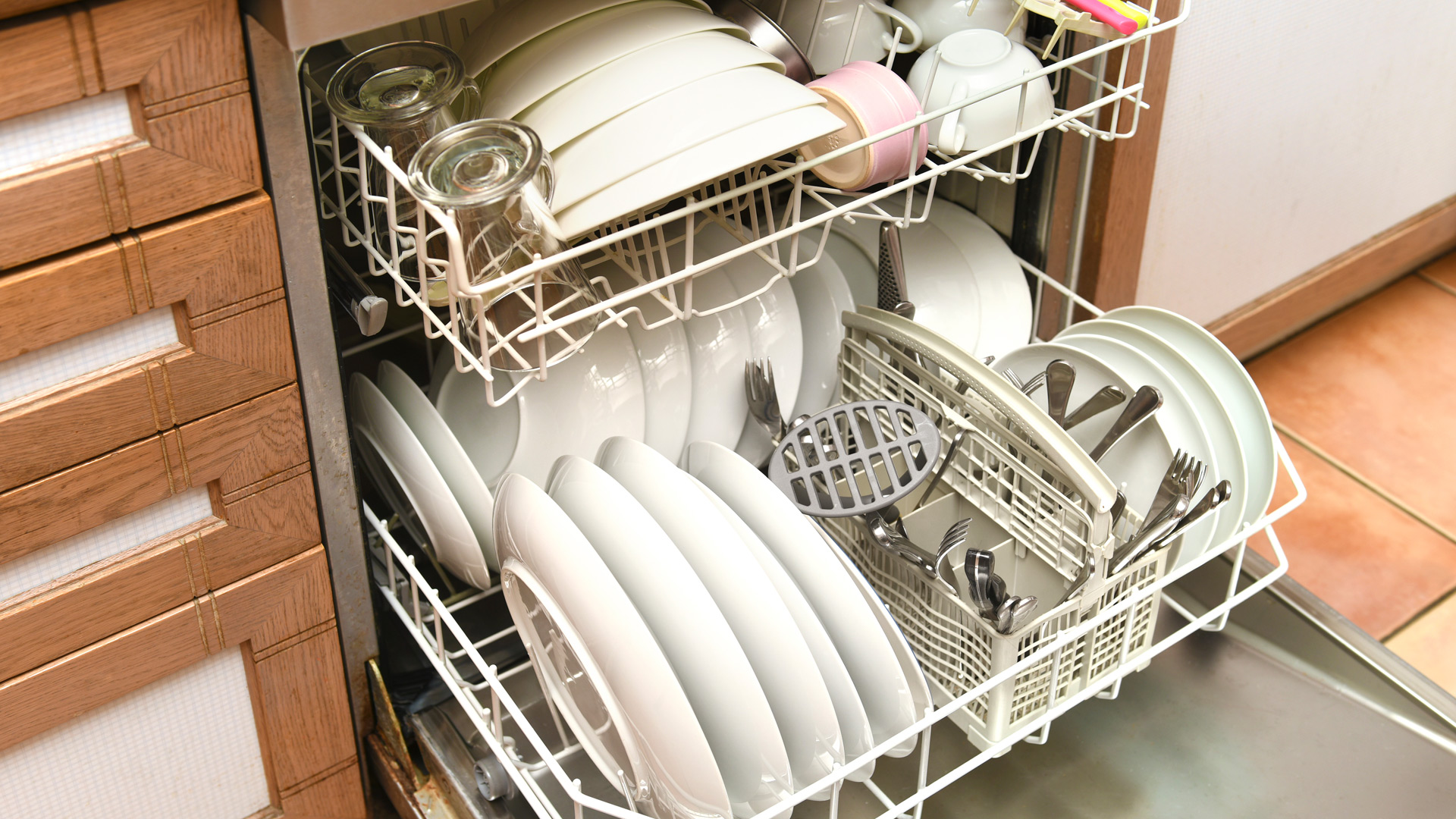When it comes to dishwashers, one size does not fit all. I know this from experience, having had to opt for a slimline dishwasher in my kitchen due to a lack of space. However, dishwasher sizes are not limited to standard and slimline. In fact, several sizes are available, from small countertop dishwashers to oversized models and quite a few in between.
Whether you’re renovating your kitchen, moving into a new home, or upgrading your appliance, understanding the different sizes and types of dishwashers available can help you make the most of your budget and space.
So, whatever configuration your kitchen is, there’s sure to be a dishwasher to fit your specific needs. I’ll talk you through the sizes available and get some input from experts in the trade. Once you know what size you’re likely to need, check out our guide on how to choose the best dishwasher.

What sizes do dishwashers come in?
Standard models may dominate the dishwasher market, but there are also slimline, countertop, oversized, and even drawer dishwashers to consider. Choosing the right size involves assessing your kitchen space, household size, and washing habits.
Glenn Lewis, from Mr Appliance, has more: “Dishwashers typically come in standard sizes (24 inches wide), slimline models (18 inches wide), compact countertop models (around 22 inches wide but sizes may vary), and oversized or tall tub designs for larger loads,” says Lewis. “Both integrated (built-in) and freestanding options are available across these sizes. There are also drawer dishwashers, which comes in single or double-drawer configuration.”
- Standard dishwashers (24 inches wide): The most common size, designed to fit under kitchen countertops.
- Slimline dishwashers (18 inches wide): A space-saving option for smaller kitchens
- Countertop dishwashers (17-22 inches wide): Compact units that sit on a counter, such as the Loch Electronics Capsule dishwasher.
- Oversized or tall tub dishwashers (30-36 inches wide): Custom-built options
- Drawer dishwashers: Available in single or dual-drawer configurations, allowing flexibility in load size and frequency.

Glenn Lewis was named president of Mr. Appliance, North America’s leading appliance repair franchise providing customers with full-service residential and light commercial appliance repair, in May 2024. He is responsible for the overall leadership and growth of Mr. Appliance, a Neighborly company, throughout the US and Canada.
Before Neighborly, Glenn served as Executive Vice President at The Décor Group in Lubbock, Texas.
What type of dishwasher would suit your home?
When it comes to selecting the dishwasher that’s right for your specific set-up, you may be limited by the space you have, in which case, measuring is the most crucial aspect of choosing the right model.
But if you’re starting a kitchen from scratch or you’re open to a different configuration, it’s worth having a think about your daily cooking habits, how many people are in your home and how often you want to use your dishwasher.
The following is a rough guide to what type of household each dishwasher suits:
- Standard: Ideal for families of three or more who cook regularly.
- Slimline: Perfect for singles, couples, or kitchens with limited space. This is a good option if you frequently order takeout but need to wash glassware and cutlery, or if you prefer to handwash delicate glassware and keep the dishwasher just for plates.
- Countertop: Best suited to renters, very small kitchens, or home bars to clean glassware separately.
- Oversized: Best for large families or people who love to cook and entertain often. These may need to be custom-ordered so they can get quite expensive.
- Drawer dishwashers: Great for washing small loads more frequently without wasting water.

Justin Cornforth, owner of Ace Home Co, has more on the pros and cons of each type of dishwasher. “Standard will work for families with more than three people but don't count people only. I'd say these models will fit you if you cook at least four times a week. Otherwise, you might run half-empty loads (which isn’t efficient!) Forrest Webber, owner of The Trade Table, adds, “The 18" and 24" are our bread and butter, but there are also large sizes like the 30". They can even get larger, but usually, you have to custom-order them.”
For growing families, Cornforth advises choosing an adjustable-rack 24" model over a slimline model: “You’ll thank yourself later!” Lewis makes a good point if you have plenty of space and don’t want to invest in an oversized dishwasher: “Don’t forget you could always put in a second dishwasher if you have a large family or entertain a lot.”
“Drawer dishwashers have two separate drawers that can be run independently, which is great for smaller, frequent loads,” notes Lindsay Zollman, appliance expert at Hisense, "They’re also more energy- and water-efficient, making them a smart choice for eco-conscious consumers."

Justin Cornforth is the owner of Ace Home Co, a family-owned company founded in 2017. With a strong emphasis on professionalism and expertise, Justin continues to lead his team in exceeding customer expectations and ensuring that all plumbing, electrical, heating, and air needs are met with excellence.

Forrest started at JPMorgan as a Data Domain Architect, where he gained invaluable experience in corporate operations and data management. Eager to expand his skill set and explore hands-on work, he transitioned into an electrician apprenticeship. This experience deepened his appreciation for craftsmanship, problem-solving, and the home service industry. He created The Trade Table to provide integrated solutions for homeowners, ensuring style, comfort, and functionality.

Lindsay Zollman is a Senior Consumer Analyst at Hisense with three years of experience in home appliances. She specializes in understanding how consumers shop for and use their appliances, helping them get the most out of their products. Her work supports Hisense's mission to deliver high-quality, innovative, and affordable home technology that makes everyday life easier.
Do dishwashers of the same size have the same capacity?
Surprisingly, no! The configuration, number and style of racks inside the dishwasher can affect the number of plates, bowls, glassware and cutlery it can hold. Dishwashers with identical external dimensions can have vastly different capacities due to these design elements.
“Two dishwashers of the same width can have totally different useful space and can hold different amounts of dishes,” says Cornforth. “For example, models with stainless steel tubs often don't have exposed heating coils, freeing up space for more dishes. Interior design also matters: adjustable racks, foldable tines, and third racks can increase capacity.”
Cornforth also points out that some standard dishwashers hold only 10 place settings, while others fit 16 or more. Checking the place-setting capacity rather than just external dimensions helps in choosing the right model.
How to measure for a dishwasher
You may think you only need to measure your existing space's width, depth, and height. But our experts say you should also consider other important factors.
“Measure between your cabinets or under the counter to get the width, which is considered the size of a dishwasher,” says Cornforth. “Also, check the height (from floor to underside of the counter). Usually, it's 34 inches. Adjustable feet on your dishwasher will allow you minor adjustments if it's out a little.
“Then check the depth (from the back wall to the front edge of the cabinet space). Usually, it's 24 inches. Depth matters for cabinet doors; if you have inset doors, you might need a shallower model to allow them to open properly.”
Cornforth also points out that some dishwashers sit lower than your old one, meaning your baseboard might need trimming. “Don't forget to leave space for water hoses and electrical connections, and ensure you have enough clearance to open the door fully. Also, some dishwashers require power on the left side, others on the right, so check this before buying!” he adds.
Try to see your dishwasher in person at a store if you can. You can check the configuration of the racks and get a feeling for how much capacity your final choice of dishwasher will have. Plus you can find further expert advice instore.

How to stack your dishwasher
Now that you’ve picked the perfect dishwasher size, I’ve got some expert tips on stacking it so efficiently that you’ll save plenty of water, energy and time, especially if you’ve got a slimline or smaller dishwasher. Here’s some advice from the experts I've spoken to:
- Load larger items in the back and on the bottom to make the most of the space.
- Angle plates and bowls toward the spray arms so they get fully cleaned. Placing them slightly at an angle instead of stacking them perfectly straight can allow you to squeeze an extra two or three plates into the same space.
- Always flip pan handles upwards and tilt bowls slightly to prevent water pooling.
- The back corners of the top rack are the perfect place for mugs and measuring cups.
- If space is tight, handwash large items to maximize space for everyday dishes.
- Avoid overloading. If dishes are too close together, they may not get fully washed.
- Adjust the racks, if possible, to fit taller items.
- Use a silverware basket or third rack to keep utensils organized. Place knives sharp-side down in the cutlery basket to reduce dulling and save fingers.
- Mix forks, knives, and spoons for even cleaning.
- If you have adjustable tines, lock them in place before loading to avoid breaking glass dishes and ensure they stay in place during the wash cycle.
No matter your kitchen layout or family size, there's a dishwasher to match your needs. Measuring carefully, considering internal capacity, and choosing a model that fits your lifestyle will help you get the best performance. Once installed, stacking your dishwasher efficiently will maximize space, improve cleaning, and save water and energy.

